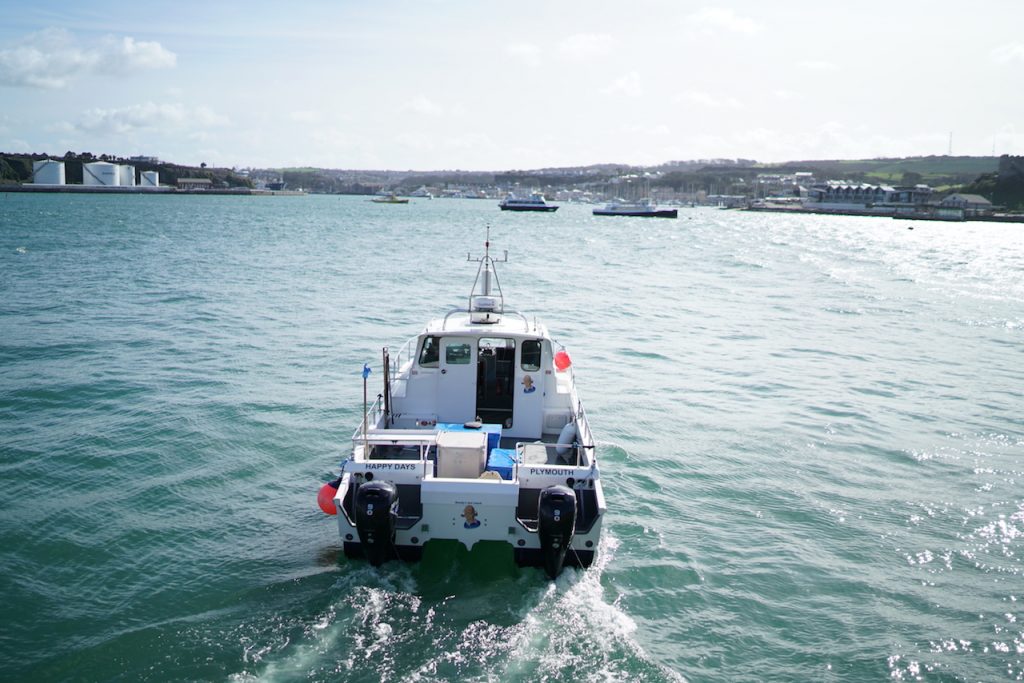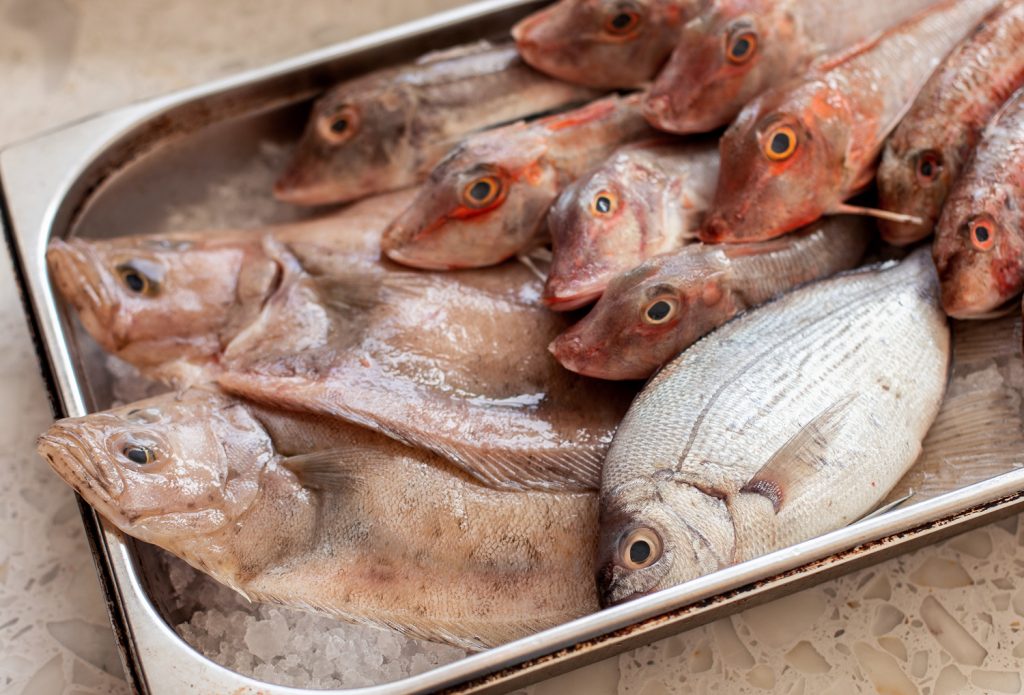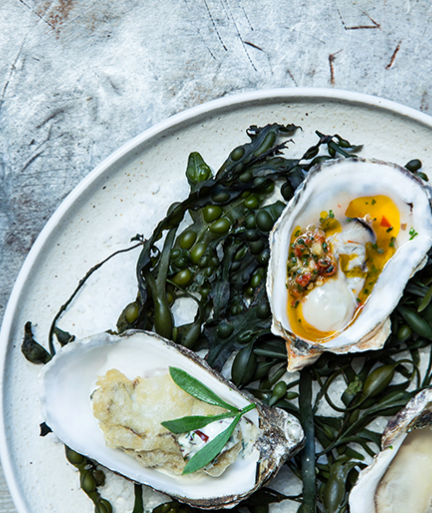The best BBQ Delivery Boxes in the UK from small sustainable British Farms
Written in collaboration with Farmdrop
When it comes to thinking about eating the freshest most sustainable fish, many of us are instantly transported to the shaded terrace of a small family-run seaside restaurant on the Med, with a glass of rosé and a plate of fresh calamari.
“It’s actually called squid and it’s probably been caught off the British coast,” says Nick Fisher, a Dorset-based fisherman, originally from Glasgow, who wrote The River Cottage Fish Book with Hugh Fearnley-Whittingstall.
“You only need to stand on the pier at Weymouth to catch the biggest squid you’ve ever seen in your life.”
Sustainable fish: what’s the catch?
Our lack of knowledge and interest in the huge varieties of sustainable fish caught off the British shore means fishers are having to export some of their best catches.
Meanwhile supermarkets import cheaper versions of arguably lesser quality from around the globe – deboned, filleted and sold in a plastic containers ready to bung straight in the oven.
Incredibly, more than 150 species of British fish are caught in the waters that surround the UK. Yet, the majority of Britons only eat about five different types of fish.
This is bad news for the most popular fish whose stocks are being decimated and who are being farmed in the most unappealing ways.
Shellfish
Beautiful langoustines caught off the coasts of Wales and Scotland are exported to the Med – along with a staggering 85% of all UK shellfish. Meanwhile, supermarket shelves are lined with prawns reared on antibiotics and steroids from highly unsustainable mangroves in the tropics line supermarket shelves.
Even those caught in the North Sea are done so at huge detriment to the environment. It takes two football pitches’ worth of trawled space to collect one kilo of shrimp. Plus, the discard rate is massive because the nets are necessarily tiny.
As Caroline Bennett – the founder of Sole of Discretion, a collective of small-scale fishers fishing out of Plymouth harbour – and I discuss reports that the Asian shrimp industry is still rife with human slavery, she reveals:
“I know people in Ecuador who have literally had their colleagues murdered over prawns because they’ve opposed big foreign companies taking over from small-scale landowners.”
Bennett continues to reel off the issues surrounding the other most popular species.
Tuna
Tuna can no longer be caught wild off the coast of Scarborough. It’s now largely imported from Sri Lanka, the Philippines and India. Here they are ranched, caught young in the wild and fattened up for sale.
Salmon
Salmon, meanwhile, are commonly born into farming systems.
Aquaculture has grown to produce 50% of the world’s fish. This is despite the fact that the questionable ethics and hygiene behind the more intensive systems regularly hit the headlines.
Moreover, during its few years in captivity a salmon will eat about three times its weight in small wild fish, known as krill. As well as being highly unsustainable, this means a key food source for the likes of whales, seals and penguins is being depleted.
Haddock and cod
The final two most commonly eaten fish are haddock, fished from the North Sea, and cod, which evidence suggests is moving further north up the British coast as the seas are warming.
Both are vulnerable to overfishing, which quotas are supposedly managing. But it’s questionable how much longer these two species alone will be able to satiate our appetites for white fish.

Sustainable fish: what should we be eating?
One of the main issues with fishing for cod and haddock is the bycatch from large trawlers. They are caught alongside the lesser known members of the cod family, such as pouting, coley and pollack. We generally won’t even consider eating these in the UK.
“Even among fishermen there’s this weird species hierarchy,” says Fisher.
“A friend in Ireland was livid that I bought a pollack home. I made goujons and he wouldn’t even try them. It wasn’t even worthy of cat food in his eyes.”
Fisher admits that cod and haddock are probably the cream of the crop (hence their soaring popularity). But the others also offer a sweet white meat that can be just as tasty – if only we’d be willing to give them a go.
“Fry them in breadcrumbs and put them in a bap with homemade salsa verde or horseradish and it’s to die for,” he says. “Or poach them and serve with a zesty sauce if you want to be more healthy; they’re versatile and tasty fish.”
Sustainable fish: one size doesn’t fit all
But it’s not just a hierarchy that causes us to be so unadventurous. It’s more efficient for large industrial fishing equipment to process a certain size and type of fish, so they like conformity.
Reducing the number of products also works well for supermarkets who demand consistency of supply. However, there’s quite literally a sea of British fish out there.

Sustainable fish: seasonality
Our disconnection with fish has become so wide that many of us do not realise it’s seasonal.
Plaice, founder and dover sole fatten up during the spring and summer, but they get thinner as we head into winter. This is when they spawn, which uses up a lot of energy.
Late summer is also a great time for spider crab, which are hugely underrated. Most of the meat is in the legs so it can be a bit tricky to eat, but it’s sweet and delicious.
The colder weather brings the consolation prize of shellfish caught off the British coast being at their best – especially mussels and oysters.
Huss, a meaty white fish from the shark family, is great also great for winter stews, fish curry and tacos.
Herring, anchovy, sardines and mackerel are great to eat all year round. At the bottom of the food chain they are more plentiful and not endangered – yet.

Not everybody loves ray
For those keen to to try something new, summer is also great time for ray.
Rays are one of the fish whose texture and flavour are improved by being frozen. Defrost before cooking and simply wrap in tin foil, add a squeeze of lemon juice, some butter and capers, and place in the oven for 15 minutes. With the cartilage still running through it’ll be nice and juicy when it comes out.
Ray fishing can be controversial because it has been on the MCS “fish to avoid” list.
However, most fishers agree there is no evidence there is a shortage of ray where they are fishing.
“I think this is a nice case to show how day boats and large trawlers differentiate, it’s not a blanket case of don’t eat this species,” says Bennett. She is working with the organic certifying body Soil Association to create a universal standard to differentiate small scale fisheries from large ones.
“It’s about where it’s caught and more specifically, how it’s caught.”
The rays that Sole of Discretion sell are from small day boats. They are caught with nets or trawls that only lightly touch the sandy seabed. This avoid the seagrass and corals larger trawlers bulldoze, causing decades of damage.
But Fisher says they are also careful about what types of rays they fish.
The Undulate ray is thrown back alive because it’s still under threat. But, the Blond and the Thornback are currently plentiful. They taste almost identical, but the Thornback always gets a lower price on the market because, as the name suggests, it’s fiendishly hard to skin.
“The price for ray is tragically low. I really resent killing the fish we get so little for,” says Fisher. “At market fisherman are being paid £1.50 or £2 a kilo. It will cost you upwards of £15 in any restaurant – and then they’ll want you to pay for your broccoli on top.”
He says that because there’s not a huge appetite for British fish it’s being exported. It’s the middle guys – not those fishing – who are making the money.
As such, eating a wider range of sustainability caught species seems like an easy and delicious all-round win.
It not only reduces pressure on the most popular varieties and reduces unnecessary discards, it also gives fisherman a chance to be compensated fairly for what they catch.


